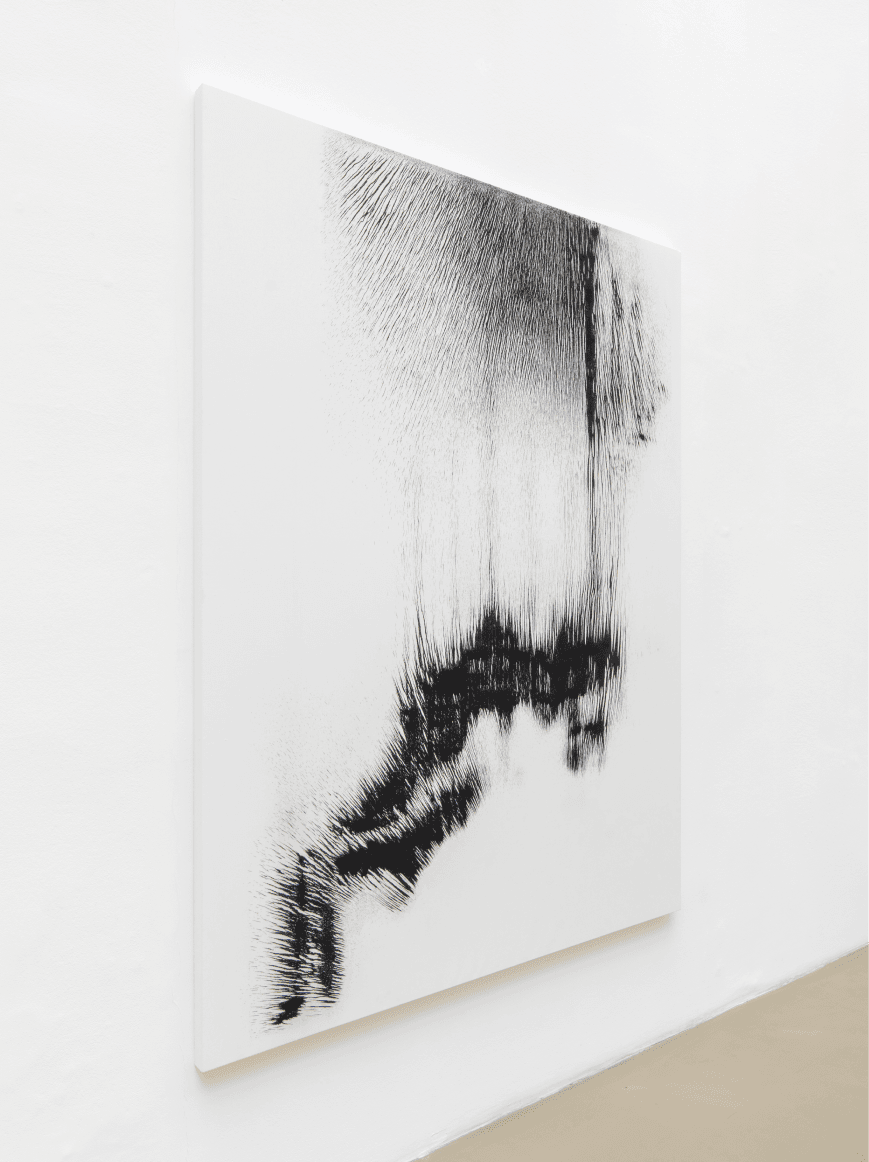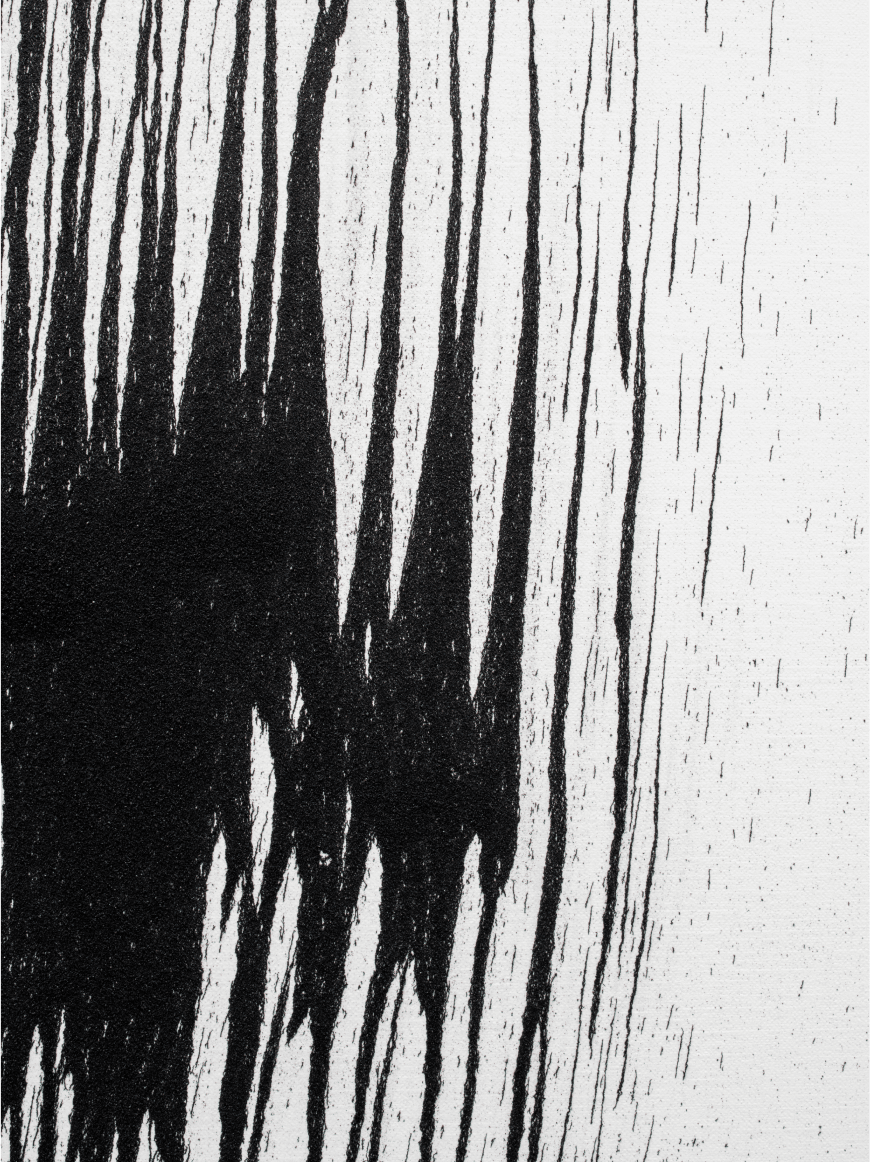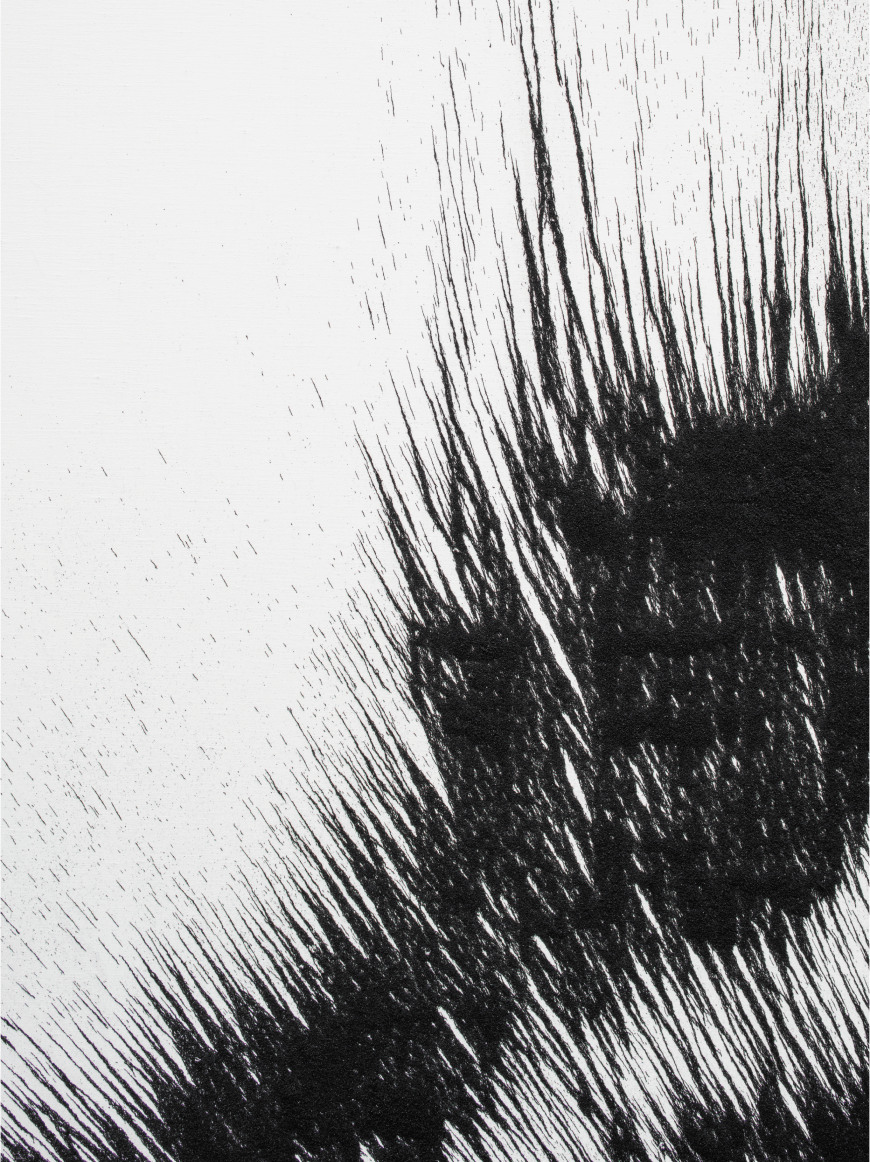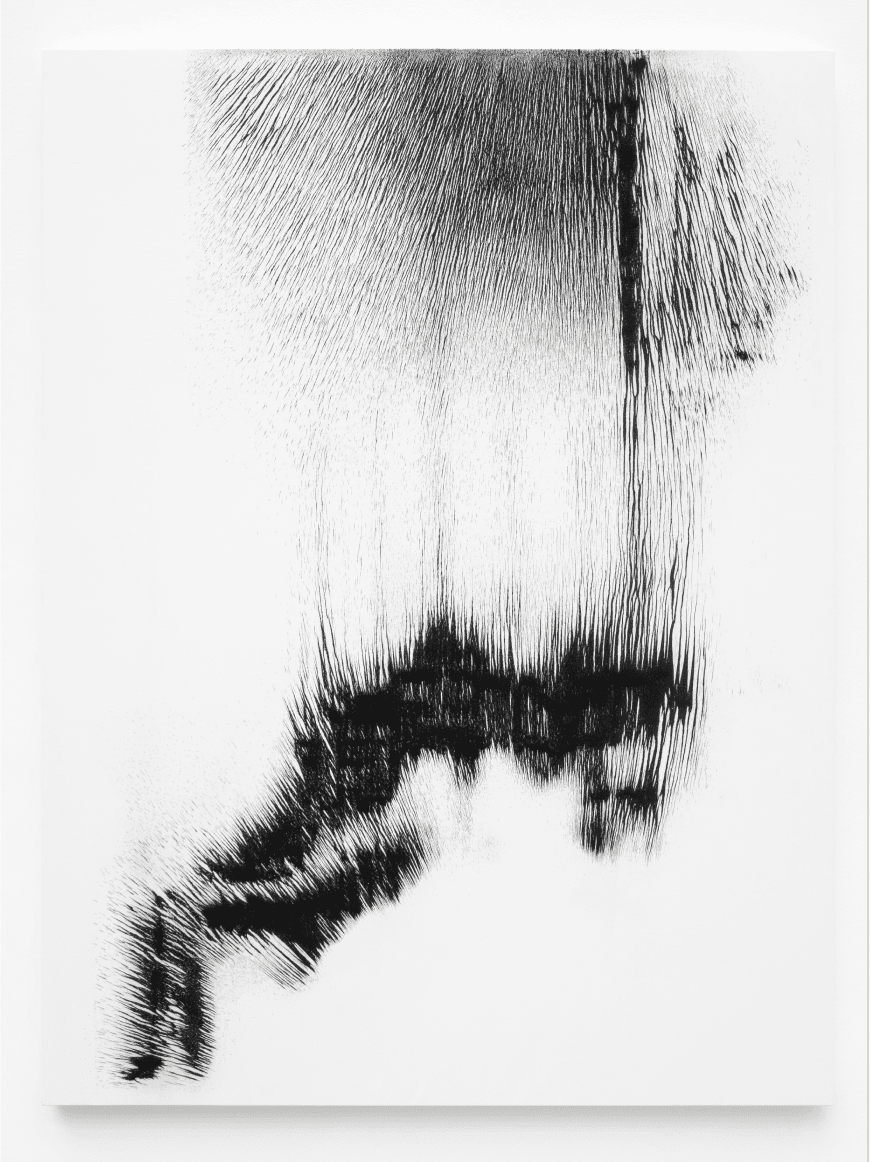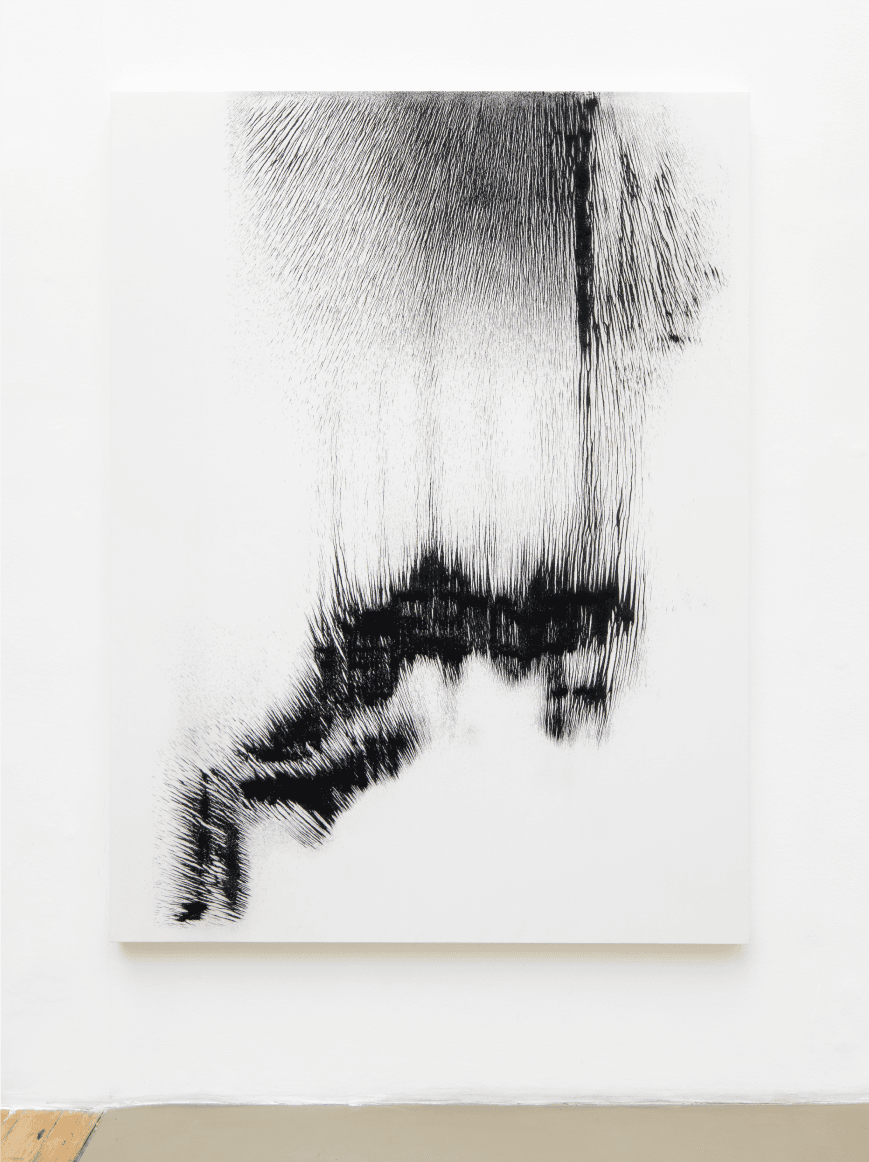AQ.0007
Jennifer Allora and Guillermo Calzadilla:
Electromagnetic Field (2022)
Iron filings on linen
•
Acquired Oct 2022
Power Play
First made in 2018, in the wake of Hurricane Maria in Puerto Rico, the “Electromagnetic Field” paintings reference a long history of abstract paintings made using chance as well as the uneven recovery of the island power grid in the aftermath of natural disasters.
The work’s full title (Electromagnetic Field: January 5, 2022 (Meter Number 96215234, Consumption Charge 425kWh x $0.04944, Consumption Charge for Additional 1,485kWh x $0.05564, Fuel Charge Adj 1,910kWh x $0.147356, Purchased Power Charge Adj 1,910kWh x $0.036202, Municipalities Adj 1,910kWh x $0.003235, Subsidies, Public Light & other Subv HH, 1,910kWh x $0.0010368, Subsidies, Public Light & other Subv NHH 1,910kWh x $0.000522) comes from the Puerto Rico Electric Power Authority, linking the production of these shapes to the island’s power infrastructure, an entity shaped by both American colonial control and internal corruption. The title also alludes to the oil futures market and transnational holders of the Puerto Rico Electric Power Authority’s bond debt to the local consumers who suffer the consequences of the bankrupt power authority’s fiscal mismanagement.
Like the German artist Sigmar Polke, who in the 1980s made paintings where unconventional materials like silver oxide, snail slime, and arsenic mixed and “alchemized” with pigment, the Electromagnetic Field paintings embrace external, natural forces as a way of making abstract images infused with chance. The paintings are made by dropping iron filings on top of a canvas and then moving the canvas above an array of copper cables. The cables are connected to an electrical breaker in the artist’s studio in San Juan and the electrical current forces the particles into abstract shapes and patterns governed by the electromagnetic field. The canvas is continuously tapped to set the filings into motion, aligning the filings along positive and negative poles. Allora & Calzadilla cleverly connect this art historical discourse on chance to politics by drawing attention to the way natural forces–in this case, electricity–are parceled out and controlled by governmental authorities.
Overview
Meet Allora & Calzadilla
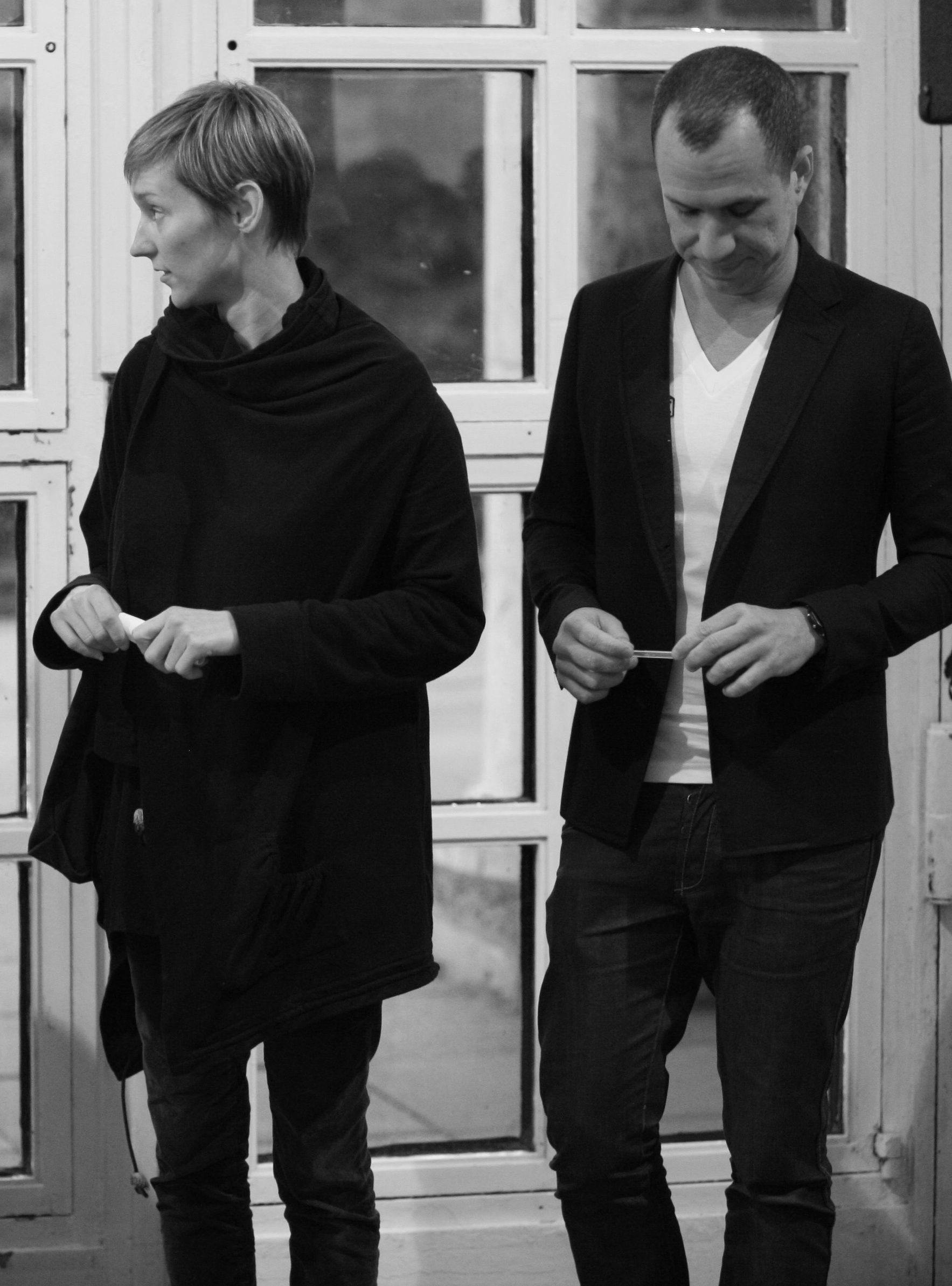
Courtesy of the artists.
Jennifer Allora, born in 1974, in Philadelphia, U.S.A. Guillermo Calzadilla, born in 1971, in La Havana, Cuba.
Since 1995, Jennifer Allora & Guillermo Calzadilla have collaborated on an extensive body of work. Through a research-based approach, their practice traces the intersections of history, material culture, and politics through a wide range of mediums including sculpture, performance, sound, video, and photography. From a film in the perspective of a parrot (The Great Silence, 2021) to a boy’s choir singing operatic insults at each other over rock sculptures (Fault Lines, 2013) the duo examine the poetic and political ruptures of nationalism, humanism, and capital.
Their work is in the permanent collections of the Museum of Modern Art, New York, the Museum of Contemporary Art Chicago, the Pompidou Center, Paris, and the Tate Modern, London. In 2011, they represented the United States at the Venice Biennale.
Their work has also been exhibited and collected widely in public institutions and private collections. They are the recipients of various prizes, including: The Scientific Merit Award and the Audience Award at the 10th Annual Imagine Science Film Festival in New York (2017); the Gwangju Biennial Prize (2004); Penny McCall Foundation Grant (2003); Joan Mitchell Foundation Grant (2002); and the Cintas Fellowship (2002-2001). Their last solo shows include: “Specters of Noon”, The Menil Collection (2020); “Balance of Power,” Tate Modern, (2019); “Graft,” Garage Museum of Contemporary Art, Moscow (2019); “The Tropical Pharmacy,” Guggenheim Bilbao (2018); “Chalk,” Walker Arts Center (2018); “Allora & Calzadilla,” Fundació Antoni Tàpies, Barcelona (2018); and “Blackout,” Museo Nazionale delle Arti del XXI Secolo: MAXXI, Rome (2018).
Artists
Under Control
We live in a “metaverse”––where we spend an increasing amount of our lives online––but we also live in what some call the “Anthropocene”—the geological age in which human activity has been the dominant influence on climate and the environment.
One effect of this is that we’ve never been less sure of what it means to be human. It has become increasingly important to consider the costs of development and of reckless natural resource extraction. Perhaps it is time to leave the myth of progress behind all together. “Instead of looking ahead,” anthropologist Anna K. Tsing writes in her study of life amidst capitalist ruin, The Mushroom at the End of the World, “can we just look around us?” How do we re-imagine the place of the human amidst emerging digital and ecological networks? What might we find in the ancient and future technologies of the forest or the island?
Since 1995, Jennifer Allora and Guillermo Calzadilla have explored these questions through a multimedia practice across sculpture, performance, and painting. Based in San Juan, Puerto Rico, their work frequently engages with the local ecologies and economics, as well as histories of colonialism, extraction, and industrialization. A few months ago, we considered works by the pioneering media artist Lynn Hershman Leeson, whose work probed the gendered relationship between humans and technology. For our most recent acquisition, we considered the constructed relationship between nature and technology. For our seventh acquisition, we revisit those questions, with an expanded focus on environmental impact, through the work of Allora & Calzadilla.
On October 17, 2022, Arkive launched an acquisition round titled “Under Control,” engaging in dialogue, discussion, and debate on the work of Allora & Calzadilla. Electromagnetic Field was considered alongside works from the Graft and Solar Catastrophe series, three cornerstone bodies reflecting on the geopolitics of energy in Puerto Rico.
After a series of votes, the community selected Electromagnetic Field as the seventh acquisition into the collection. Core team members then worked with the Paris-based Chantal Crousel gallery to acquire the work. Electromagnetic Field will go on display globally via an Arkive traveling exhibition in late 2022. Following that, the work will enter into long-term residency at a prominent public location, as selected by the Arkive membership.
About the acquisition
Select Voting Member Comments
Conversation
Additional Materials
We encourage you to read further into Allora & Calzadilla, their works, and their career. To kickstart the process, please find a few selected readings and interviews below. As always, this is just the start. Apply to Arkive to continue the conversation with the community.
